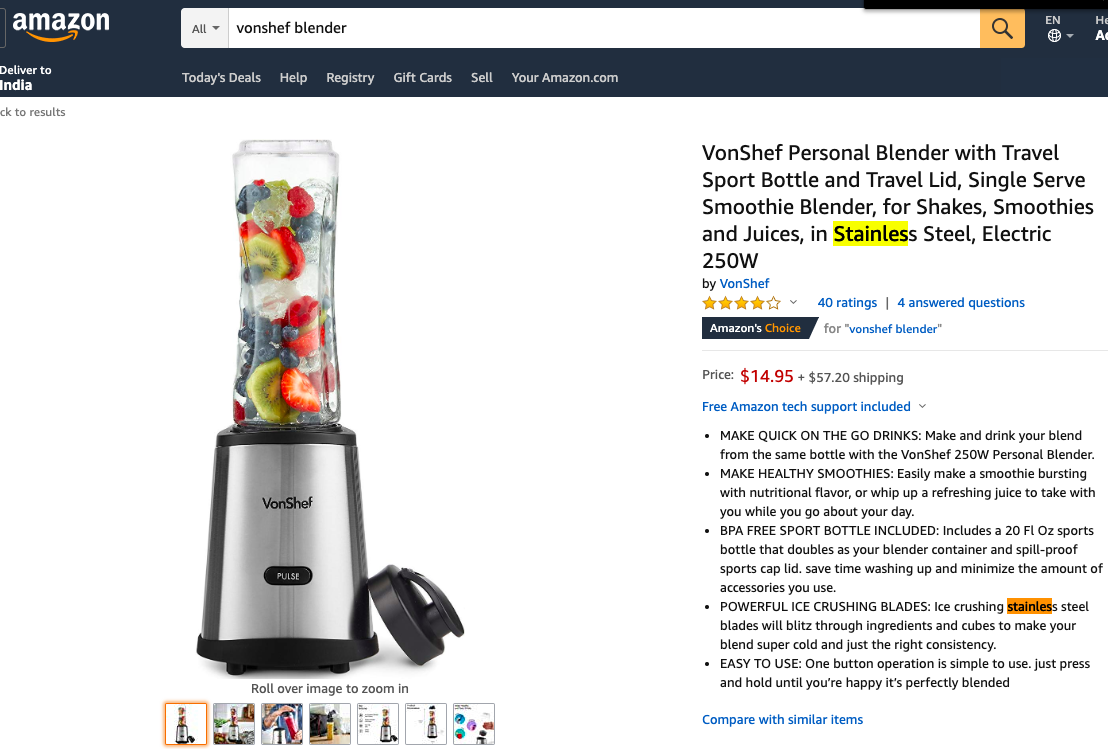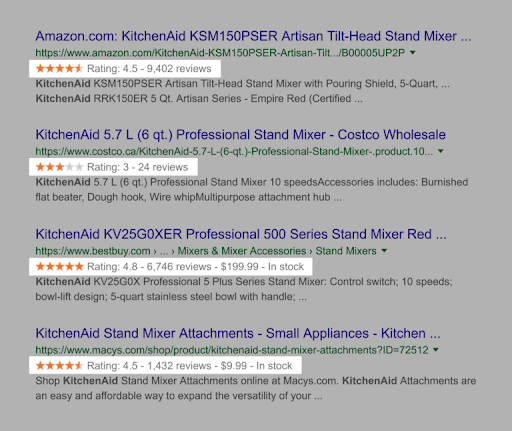Search Engine Optimization (SEO) has always been a low hanging fruit that online businesses often fail to use in their favor. Without proper SEO, you can’t rank higher than your competitor in the Google search engine result page (SERP).
But what should be the right approach? Unlike any other website, your eCommerce website requires special attention when it comes to SEO best practices.
As an eCommerce website owner, you would want to rank your product pages on the top.
For instance, let us assume that you are selling gifts for dog lovers, and you want to primarily attract customers that have a “Siberian Husky” as their breed. Then you might want to rank for a term like “Gifts for a Siberian Husky.”

The result would show a few ads, followed by organic search results. However, organic search results attract the majority of clicks.
Hence, as an online seller, your primary aim should be to rank your product pages. But to rank your products on the top, you need to focus on the right set of keywords and other strategies.
Let us have a look.
Why SEO For eCommerce
1. Pick Right Keywords For Your Online Store
When you start researching for high-value terms, you need to know that research for eCommerce keywords is pretty different from an ordinary website because other sites just focus on information keywords.
Have a look at this screenshot:

But your goal is to rank commercial keywords that include the products you sell. For instance, if you are selling dog food online, this screenshot will help you understand.

The difference in both the above-mentioned examples is that people who are searching for information will go to blogging and news websites.
People who are online for shopping will enter commercial keywords and search for websites that are selling products online.
To prepare a list of high ranking keywords, you must consider both Google and Amazon.
When you start typing a search term in search of the Google search bar, you start getting suggestions. These are not just suggestions but the terms your target audience usually search for.

The same thing happens in the Amazon search bar.

In both the screenshots, you can see Google and Amazon suggesting for most searched keywords. You can leverage this goldmine of keywords ideas after figuring out basic keywords for your eCommerce website.
One suggestion here is to choose long-tail keywords carefully as they are more specific and usually attract low volumes of traffic. However, this also means that the competition is low, and the chances of conversion are high.
You can also leverage keyword research tools for more insightful keyword research. Just enter the domain name of your competitor’s website to get easy access to keyword rankings.
You can form the right list of keywords by choosing volume, relevancy, intent, and competition of the keyword.
Keep in mind that it would be easier to achieve good rankings for commercial keywords when you have an established website with a strong Domain Authority.
To achieve that, you can also leverage your blog where you will target informational keywords. If you choose those that are not too competitive, you will be able to get good rankings faster, and then pull the visitors into your funnel to convert them.
2. Potent Site Structure
SEO of your website hugely depends on the way you organize your web pages and the overall structure of your website. And most importantly, it affects the user experience (UX) of the website.
Hence, it is crucial to have an efficient site structure that would make it easy for your customers to search and browse the website.
Here’s what an ideal architecture would look like for an eCommerce site selling shoes:

Keep these two points in mind to have a good site structure:
- Build a simple site structure that is easily scalable
- All the pages are easily accessible from your homepage
It makes sense to keep your product pages close to the homepage because the majority of the link authority is on the homepage.

eCommerce content pages also suffer from thin content due to several reasons, including product filter pages and random product attributes. The chances of content duplication also increase in such scenarios.
You can easily handle this situation by indexing or canonicalizing these pages. Simply put, canonicalizing a page means telling Google that the URL is the master version that you can display in search results.
3. Onsite SEO
After robust keyword research and a solid website structure, the next work that needs to be done is onsite/ on-page SEO.
Here are a few crucial steps that need to be taken.
- Optimize URLs: Make sure that the URLs are easily readable for normal users, and its text makes sense. While deciding the name of the URL, consider using relevant keywords to help it rank better in search results.
Also, keep the length of URLs shorts under 50-60 characters while ensuring that its name matches closely with the page title. Avoid pointless stuffing of keywords and inclusion of conjunctions.
- Reduce the Number of Thin Content Pages: Google leverages information present on web pages to decide their rankings in the search results. Hence, if there are pages with short product descriptions, then try to beef up the content of those pages to make them more informative and relevant for your customers.

Pages with thin content like in the above example have minimal chances to rank in the search engine results.
As we mentioned above, eCommerce websites have a different website structure than other niches.
For instance, SaaS websites don’t have too many pages, but to compensate for that, they do aggressive blogging. They promote quality blogs and resource pages to achieve good rankings. eCommerce websites can leverage such content strategy as well, and get an unfair advantage.
Therefore, eCommerce websites should publish more blogs that don’t just cover products and their features, but respond to needs and pain points at all stages of a customer’s journey. This will help you in garnering more trust and raising brand awareness among customers.
- Leverage Latent Semantic Indexing (LSI) Keywords: LSI keywords are related closely to the main keywords. You can easily figure out these keywords through an Amazon search. It is also called the Amazon Eyeball Test.
For example, search for a “blender” in the Amazon search bar:

On the product page, you will see keywords like “Stainless Steel” and “Blender” repeating multiple times. This indicates that these are strong selling elements appearing in search terms.
You can also run your keywords through Google Keyword planners to populate the list.
4. Product Reviews
Rich product snippets can easily help you to rank on Google search results. And you can easily have these through product reviews.
Check out this example:

Well, how do you get all the snippets? It is quite easy, actually!
Just implement schema markups on your product pages. It is a special code built to help Google gain a deeper understanding of your product pages.
Here’s how Google defines reviews:

However, Google never guarantees to reflect snippets on your pages in the search results, but Schema markups definitely increase your odds.
You can easily set up Schema markup through Google’s Structured Data Markup Helper to help boost your SEO.
Wrapping-Up
SEO for an eCommerce website is entirely different from other websites. It requires a deeper understanding of the website architecture, product pages, content positioning, and keywords to build a highly optimized eCommerce website.
If you follow all the steps mentioned above, you are definitely going to stand out.
Guest Post By — Ashley Wilson
Ashley Wilson is a content creator, writing about business and tech. She has been known to reference movies in casual conversation and enjoys baking homemade treats for her husband and their two felines, Lady and Gaga. You can get in touch with Ashley via Twitter.


